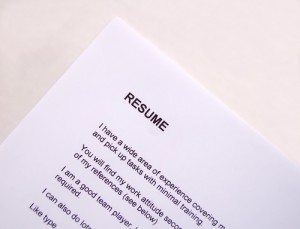Career Advice for Job Seekers
How to Include Your Extra-Curricular College Activities into the Resume
Starting in high school, many students begin to load up on extra-curricular activities in order to dazzle college acceptance boards. Often, this leads to carrying on with activities or organizations that become personally important. For some it could be volunteering at a legal aid society, community pantry or other outreach program. For others, activities involving ecological initiatives or political organizations are a good match for their personal interests as well as the career field they find themselves drawn to. While loading up on extra-curriculars can help edge you to the head of the line with admissions boards, many university students struggle over whether or not to include it in their formal resumes.
Do Employers Care About Your Free Time?
Depending on your career field – or the job you’re applying to – you may not need to include your outside interests or extra-curricular activities. However, when your extra-curricular activities relate directly to your career, it can be a great way to show off your real world experience, even if you don’t have much in terms of employment history.
When debating whether or not your extra-curricular activities should be included, ask yourself how much they have to do with the position you’re applying for. For example, if you decide to apply for a position in a small legal firm and you’ve spent the past four summers volunteering at your local legal aid society, that’s worth including.
Know How to Fit It In
When creating your resume, consider first the kind of information you’ll want to include. Making a shortlist of the information you want to include will help you choose the type of resume to use more easily. Basically, there are four types of resumes:
- Chronological
- Functional
- Combination
- Targeted
Details on extra-curricular activities or volunteer work will fit in specific areas, depending on the type of resume you’ve chosen to use. On a chronological resume, the most common type, these details will fit in well after you’ve listed your work experience. Since a functional resume focuses more on the skills you can bring to the workplace, you will be able to highlight this type of experience before you begin listing your work experience. As its name implies, a combination resume combines the best of each and so gives you more flexibility in how you present extra-curricular activities. Since a targeted resume is custom made for each application, this can provide the best in terms of flexibility and how to frame your activities and work experience. However, this final choice is also the most time-consuming and is typically only used when applying for a job you feel particularly passionate about.
Less is More
Some experts say the days of a one page rule for resumes is over. Others insist that with the sheet quantity of applicants for many positions, keeping it to a single page is more important than ever. While opinions may be split on length, one rule remains true – your resume must grab the reader’s attention and connect with them as quickly as possible. Including details on extra-curricular activities or volunteer work can accomplish this better than almost anything else. The inclusion of this kind of experience shows your personal passion, dedication and discipline. Sometimes it can also help a potential employer to see you in a different light.
However, the benefits of including this information don’t mean you need to turn your resume into another thesis paper. It’s true that there are many more applicants for jobs, particularly in specific, fast-growing areas. While your resume needs to stand out, it also needs to be presented in such a way that hiring managers can learn about you quickly.
Including details about your extra-curricular activities can help you to connect with managers and prospective employers on a more personal level. Sharing this kind of information also shows your ability to balance work, school and your personal life while giving the reader a glimpse into what truly motivates you. The best way to fit this information in depends a great deal on the type of resume you choose. It can be included in any type of resume, however, though some styles are better for highlighting this kind of work, particularly if you’re lacking in actual work experience.
The best way to determine exactly how to highlight extra-curricular and volunteer activities in a resume is to play around with different styles to see which works best. Keeping several styles open at once and then copying and pasting details in a rough draft format will let you see which style is more visually appealing before buckling down and getting the wording just right. Keeping an open mind of to each resume style will give you the flexibility you need to craft a resume that catches the reader’s attention and then keeps their interest.
Author Bio:
Steve Aedy is a content writer at FreshEssays – a company that provides writing and editing assistance. He likes to write about social media and education-related issues. You can follow him on Google+.
New Job Postings
Advanced Search